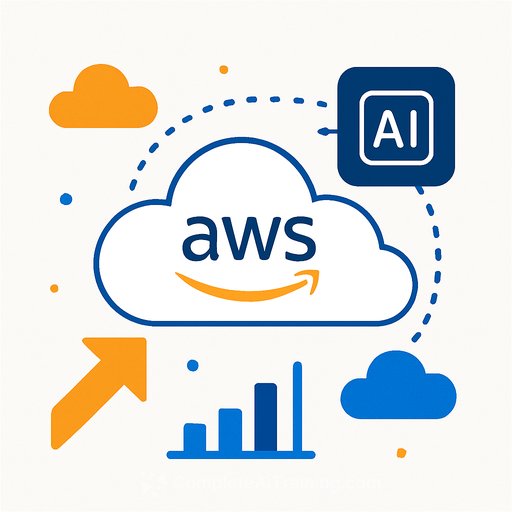AI Will Feed Your Worst Management Habits-Unless You Choose Differently
Every AI program forces a choice: use it to centralize control or to push judgment and tools to the edge. Most teams default to control. It feels safe, measurable, and tidy. It also drains initiative, slows learning, and creates a quiet revolt among your best people.
If you pick the control route, you'll get compliance and speed in the short term. Then you'll pay for it with stale ideas, metric gaming, and a talent exodus. The fix isn't complicated. It just requires a different instinct: trust plus clear guardrails.
The Panopticon Path (What It Looks Like)
- Work chopped into identical micro-tasks. Thinking optional, variance punished.
- Continuous monitoring: keystrokes, tickets closed, time on task, prompts logged.
- Speed-only incentives. Quality is assumed, nuance ignored.
- "Surplus" people cut once AI lifts throughput.
On paper, it's efficient. In practice, it breeds learned helplessness, brittle operations, and decisions that miss context.
Why This Backfires
- Creativity falls: people stop proposing better ways when the system treats them like replaceable parts.
- Metrics get gamed: what gets measured gets optimized, then distorted.
- Customer trust erodes: edge cases multiply, scripts fail, support loops lengthen.
- Attrition rises: your highest-agency performers leave first, taking institutional memory with them.
- Regulatory risk creeps in: undocumented models, biased outputs, and shadow data pipelines.
If you want background on algorithmic management risks, see this overview from MIT Sloan Management Review: When Algorithms Manage Employees. For governance implications, the EU's approach offers useful signals: European AI Act (overview).
The Better Bet: Augment and Trust the Edge
The alternative uses AI as a co-worker, not a warden. Push capability to the front line with clear bounds. Keep humans accountable for judgment, escalation, and outcomes.
- Decision rights: define which calls are made on the front line and which escalate.
- Guardrails: approved tools, data access limits, and red lines for use cases.
- Co-pilot patterns: draft → check → approve. AI proposes, humans own.
- Feedback loops: every assist or error teaches the system and the team.
A Practical Playbook for Managers
- Map decisions: List your top 20 recurring decisions. Tag each by impact (high/low) and speed needed (fast/slow). Push fast/low-risk calls to the edge with AI assists. Keep high-impact calls human-led with AI for options, not verdicts.
- Redesign workflows: Insert AI at friction points: drafting, summarizing, triage, retrieval, suggestion. Keep approvals with humans. Document the new flow in one page.
- Change the metrics: Track time-to-resolution, error rate, rework, customer satisfaction, and risk incidents. Drop keystroke and pure volume metrics.
- Shift incentives: Reward documented improvements, quality, and smart escalation. Penalize speed-only gaming.
- Data hygiene: Limit inputs to the minimum required. Use role-based access. Log prompts and outputs for audits, not surveillance.
- Model governance: Keep a simple "model card" per use case: purpose, data sources, known failure modes, update cadence, owner.
- Upskill the team: Train managers and front-liners on prompt patterns, review checklists, and bias spotting. Give them a sandbox to practice.
What to Automate vs. What to Augment
- Automate: High-volume, low-judgment tasks with clear pass/fail criteria (routing, deduping, tagging, routine summaries).
- Augment: Work requiring context, negotiation, exceptions, or accountability (customer escalations, pricing changes, policy exceptions, performance feedback).
Red Flags You're Building a Panopticon
- Dashboards filled with volume and speed, thin on quality and outcomes.
- Front-line workbooks grow, decision rights shrink.
- More scripts, fewer experiments. More sign-offs, slower learning.
- Meetings shift from "How do we improve?" to "Why didn't you hit the number?"
Start Small, Prove It, Then Scale
Pick one workflow where response time and quality matter (support triage, proposal drafting, QA). Baseline current metrics. Run a four-week pilot with AI assists, guardrails, and human approvals. Compare outcomes, then scale what works.
If your team needs structured upskilling, see practical, role-based programs here: Complete AI Training by job.
The Manager's Choice
AI can amplify either habit: control or trust. Choose control and you get cheaper output with hidden costs. Choose trust with guardrails and you get faster learning, better decisions, and a team that actually wants to stay.
Your edge won't be the model you pick. It will be the system you run: clear rights, clean data, tight feedback, and incentives that value judgment over raw speed.
Your membership also unlocks:






